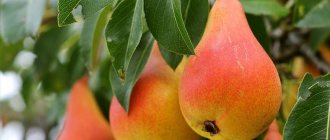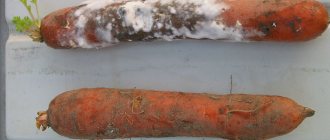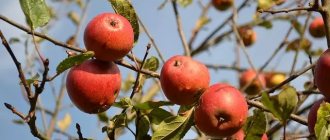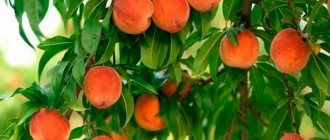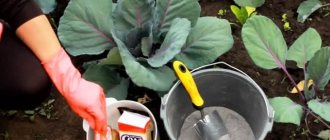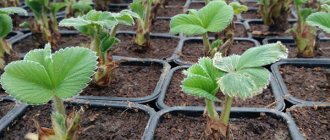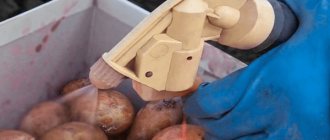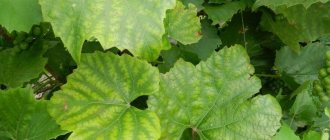Gall mites
Description of gall mites
These pear pests are extremely small in size. The adult is usually less than 0.2 mm. Ticks are painted white, which changes to pinkish or brownish with the onset of cold weather. Due to its small size, a colony attacking a plant may contain several thousand insects. Pests settle mainly in pear buds, where they spend the winter. In the spring they lay eggs. The larvae begin to suck the juice from the leaves of the plant even before they bloom. The leaves are covered with black or white dots, swellings are visible in places where insects are heavily concentrated.
Due to gall mites, nutrition and water balance are disrupted, and the process of photosynthesis stops. As a result, the development of the tree deteriorates, the fruits grow in small quantities and are small in size. Pests are especially dangerous for young plants and seedlings, as they affect their development, leading to the death of the pear.
Fighting gall mites
Gall mites can occur due to improper use of phosphorus fertilizers or drugs to control other pests that destroy galls.
If your garden is attacked by ticks, you need to start fighting them immediately. Various methods are used for this:
- agrotechnical;
- chemicals;
- folk methods.
It is agrotechnical measures to combat gall mites in the spring that are most effective. This reduces the number of pests. Methods include the following activities:
- regularly clean old branches from dry bark in the fall;
- in summer, remove fallen pears and leaves from under the tree in time;
- trim the crown every spring.
Acaricide preparations help against gall mites on pears. Preparations with phosphorus and chlorine are also suitable. They cause disturbances in the digestive system of the galls, which leads to their death. Spray the pear for 8 weeks.
The drugs Antiklesch, Fufanon, Intavir, Decis help against gall mites on pears.
Among the folk methods that are effective are:
- infusions of marigold flowers, dandelions, potato tops, garlic cloves;
- wood ash solution;
- soap solution.
To prepare infusions from potato tops, chop the plants and add a bucket of water. Leave for 4-5 hours.
Prepare a decoction of marigold flowers from 1 liter of water and 100 g of dry raw materials. Leave the boiled broth for 4-5 days. Then dilute the concentrated product in water.
Leave the dandelion decoction for 3-4 days, strain and mix with soapy water.
Video about Pear gall mite
The main pests that can “attack” pear trees
Most pests appear on fruit trees with the onset of warm weather. Therefore, after the snow has melted and buds begin to bloom on the trees, you should carefully inspect each tree so as not to miss the moment of insect flight.
Hawthorn on a pear
Hawthorn is a small leaf-eating insect that reproduces quickly and is very voracious
. If you do not deal with it in a timely manner, then the multiplying pests within a few days destroy not only the foliage, but also the flowers, ovaries and other greenery. After the hawthorn, only completely bare branches remain.
Why is hawthorn dangerous?
For the winter, adult individuals hide in foliage, which is “pasted” with cobwebs; as a result, they are easy to notice in the autumn, when the pests have already hidden for the winter.
But with timely processing of the pear, it is possible to completely get rid of hawthorn. It is important not to forget to dig up the trunk circles in the fall and spring and remove the remains of vegetation from them.
Also in early spring you should spray the crown of pear trees with insecticidal preparations.
Pear flower beetle
This pest can settle not only on pears, but also on apple trees
. These small bugs have a gray body with a brown tint and an elongated proboscis, with the help of which the insect feeds on the cell sap of flower buds. Adult insects also eat the foliage of fruit trees, and the larvae of the flower beetle eat the flower stalks of apple and pear trees.
Apple and pear flower beetle - video
As a preventive measure, you should clean the bark of trees in early spring and then paint the trunks with lime. Many gardeners in the fall put special adhesive belts on the lower part of the trunk, into which this pest climbs for the winter. In early spring, such belts are removed from trees and burned.
You can also fight flower beetles in the following way - spread polyethylene under the tree and carefully shake off the tree - the pests themselves will fall to the ground
. The polyethylene is then collected and burned along with the pests. If this method does not help get rid of all flower beetles, then you need to spray the crown of the affected apple or pear tree with a solution of Decis or Kinmiks.
Gall mite on a pear
This tick is very small in size and can reach only 0.2 mm in adulthood.
The color of their body is white, and when cold weather sets in, the color of the insect changes to pink or light brown. And an overgrown colony of such mites, which can be seen with the naked eye, can amount to thousands of pests. For pear trees, gall midge larvae, which are too voracious, are dangerous. There is no special technique for removing them.
It is recommended to take preventive measures to protect pears from gall mites:
in the spring, before the sap begins to flow, the tree crown is treated with insecticidal preparations; in the fall, all remnants of vegetation should be removed and the litter should be burned outside the site; In the fall, the tree trunk circle is dug using 1 spade bayonet.
Aphids on a pear
This “harmful” bug affects any garden or vegetable crops, including pear trees.
There are many varieties of aphids found in Russia, some of which specifically attack pear trees. You can spray a pear against aphids using folk remedies if the colony is small. The most effective in combating aphids is an infusion of wood ash. However, if there are too many of these pests on the tree, then you have to deal with aphids using an insecticide solution.
Pear moth
There are several types of codling moths, each of which affects a specific garden crop.
They are all similar to each other - large butterflies lay their clutches in buds, and the emerging larvae feed on the juice of the flowers, which as a result dry out and fall off. To prevent the appearance of moths, it is necessary to follow all the rules for caring for pears, including promptly removing all carrion from the tree trunks.
If the pest has already settled on the tree, then the crown should be sprayed with one of the following insecticides:
- Karbofos;
- Fufanon;
- Spark.
If the codling moth appears on the tree during the ripening period of pears, then it is best to use biological insecticidal preparations.
Silkworm on a pear
Large silkworm butterflies can reach 7-10 cm in wingspan
. The body of the flying insect is 6-8 cm, dark gray or brown in color. Typically, the activity of this pest occurs in the evening or at night. It eats foliage, buds, ripe pears and ovaries. Moreover, it can “settle” not only on pears, but also on other cultivated garden plants.
To avoid the massive spread of silkworms, you should regularly inspect trees in search of eggs of this pest.
. All found masonry should be collected and burned. When pest butterflies appear, you need to spray the crown with an insecticide solution.
The most effective in the fight against silkworms on pears is Nitrafen. You also need to paint the trunk and skeletal branches with a solution of lime in spring and autumn.
Moth on a pear
Small moth-like butterflies that settle on various garden crops are fruit moths
. Their size is small - up to 5 mm, but this flying pest has a large appetite. Therefore, even a small colony of such a moth can destroy large pear trees in a short time.
Damaged trees slow down their growth and development, weaken, and fruiting deteriorates.
The fruit moth feeds on the foliage and pulp of fruits, which it eats. As a result, the fruits begin to rot.
Against this pest it is necessary to use such powerful insecticides as:
- Zolon;
- Nexion;
- Phosphamide.
When there are still few insect pests, you can spray pear foliage against fruit moths with a solution of a mixture of laundry soap and hot pepper.
Different types of ticks
These pests do not like bright sunlight, so they mainly settle on the lower and middle branches of trees. For preventive purposes, it is recommended to regularly clean the trunk of trees from old bark, and paint the lower part and skeletal branches with a solution of lime.
If there are too many mites on the tree, then you have to treat the crown of the pear tree with insecticides like Karbofos. You can also use drugs that can penetrate deep into wood tissue (Abamectin and similar products).
The copperhead on the pear
Pear psyllids or psyllids feed on the cell sap of foliage.
In this case, the foliage turns yellow ahead of schedule, begins to curl and falls off. If pest control is not started in a timely manner, the tree will slow down its growth and yield will deteriorate. And young seedlings, weakened due to the attack of the copperhead, can freeze out during the winter. Fighting the copperhead on a pear
The deterioration of the condition of trees is due to the fact that, thanks to copperhead, a sooty fungus can appear on the foliage, which interferes with the process of photosynthesis in the green mass of the tree. To prevent this from happening, it is recommended to remove old bark from the trunk, as well as mosses and lichens.
For preventive purposes in the spring and early summer, it is recommended to treat pears against honeydew with the following insecticides:
- Decis;
- Karbofos;
- Agravertine.
Important!
The last treatment of pears against pests with insecticidal preparations can be carried out about a month before harvesting the fruit.
Leaf rollers on a pear
This pest is capable of eating all fruit trees in the garden, including pears
. And although the insect primarily feeds on foliage, it can eat bark, shoots and other parts of the crown.
As a result of the life activity of leaf rollers, the pear tree loses most of its foliage, its growth and development slows down, and its yield decreases.
Damaged leaves must be collected and burned off-site.
Scale insect on pear
This insect appears on the foliage of fruit trees in the spring.
The scale insect is adapted to any weather conditions, reproduces calmly and grows even at low air temperatures. The pest should be dealt with before its body becomes covered with a dense shell.
– in this case, the effectiveness of most insecticidal preparations becomes almost equal to 0.
Therefore, spraying pears against scale insects is carried out in early spring before the buds begin to bloom
. The most effective drug for destroying scale insect clutches is DNOC. Once larvae have appeared on the trees, this remedy will be ineffective - to combat them you need to use contact agents - Kinmiks, Decis or similar preparations.
To protect pear trees from pests, you should provide proper care for this garden crop and carry out timely preventive treatments of the garden with insecticides. In this case, the pear yield will be high every year.
Spider mite
Description of the spider mite
Spider mites are not insect pests, but arachnids. Therefore, insecticides are useless against it. It reaches a maximum of 1 mm in length, making it almost impossible to see. You can understand that a plant is suffering from spider mite attacks by the following signs:
- light cobweb on the back of the leaves;
- withering and drying leaves for no apparent reason;
- small dots on leaf plates.
Sometimes you can even see the spider mites themselves, especially the types with a reddish body.
The danger of pests lies in the fact that spider mites suck out all the juices from pear leaves, flowers and shoots. This causes the death of the plant. This is especially true for young seedlings. During the season, the spider mite produces about 20 generations. In a few days, an entire colony can destroy a young plant. Therefore, when a parasite is detected on a pear, the fight must begin immediately.
The control process will be very difficult, since trees are not easy to process. Parasites wait in the bark, buds, and on high branches. Every year the pear bears less and less fruit. Some gardeners recommend cutting down and burning the tree and planting a new one in its place. This option will be much easier.
Spider mite infestations are easier to prevent. But if pear pests do appear on your tree, you will have to fight for a long time, as they quickly adapt to the drugs. Therefore, several are used at once.
How to deal with a pest
When taking preventive measures against spider mites on pears, follow these tips:
- Rake leaves and remove fallen pears in a timely manner. Weed your garden regularly.
- In dry weather, spray and water the tree. Spider mites like humidity no more than 40%.
- Periodically spray the pear with garlic infusion (crush a couple of heads and add 1 liter of water, leave for 5 days).
- Feed the pear with fertilizers containing phosphorus and potassium.
Traditional methods of pest control are practically useless. It is more effective to immediately switch to chemicals. Treat pears against spider mites with acaricides and insectoacaricides:
- Iskra-bio – used before harvesting, long-lasting effect ,
- Kleschevit – high efficiency within a week ,
- Thiovit-Jet – non-phytotoxic, long-lasting effect ,
- Bitoxibacillin – slow action over 2 weeks ,
- Fitoverm is not phytotoxic, causes rapid addiction in insects,
- Fufanon-nova – has a slight odor and is non-toxic.
Signs of diseases
During the season, any yellowing, curling, or blackening of one leaf or branch is a warning sign of pear disease. Despite preventative care, at any time a disease or insect can be introduced from the outer perimeter of the garden. An attentive gardener, when walking around every day, will see a pear pest on the leaves. Diseases of pear leaves are caused by various factors:
- the tree is weakened by an excessive harvest, has received bark damage or frost damage in winter;
- the pear received fungal diseases of the leaves - scab, bacterial burn, rust;
- the plant was attacked by insect pests.
Whatever the disease, it is reflected on the leaves. Diseases make them brown, black, dry. Insects damage the leaf blade, and this is clearly visible. Pests of pear leaves can damage the ovaries and damage the fruits. Each leaf works for photosynthesis - the formation of chlorophyll under the rays of the sun. It is later processed into nutrients. Few leaves mean the plant is starving.
Weevil on a pear
Weevils are a group of beetles up to 6 mm in size. They attack fruit trees, including pears. Adults damage the buds, then the buds and flowers. Weevils eat petals, stamens and pistils. As a result, fruiting is reduced. Rarely do insects damage leaves and shoots. After hatching from the eggs, the larvae feed on the pulp of the pears.
Weevils cause the following damage:
- Affected buds on a pear do not set into buds and do not produce a full harvest;
- Leaves infected with beetles dry out and fall off. Leaf fall of more than 50% of the crown leads to renewal of greenery. Recovery takes away the strength of the plant, which leads to the fall of established buds. Fruiting declines, even the next year.
- The fruits become infected with fruit rot, rot and fall off.
Preventive measures include:
- The garden should be kept away from wild plants;
- Whitening bark in spring and autumn, cleaning old and damaged bark;
- Destruction of fallen leaves;
- Picking off brown, damaged buds.
Among the folk methods of controlling weevils on pears are spraying:
- chamomile infusion. 105 g of dry raw material is poured with water and left for 24 hours, then mixed with soap foam;
- infusions of onion, garlic, spruce or pine needles. The solutions are left to ferment for two weeks, then 1 liter of the product is diluted in a bucket of water;
- decoction of tomato tops. Boil the tops in a bucket of water for 30 minutes, cool and mix with soapy water;
- decoction of wormwood. Dry grass is boiled for half an hour, left for 24 hours and mixed with soapy water.
Spraying is carried out every week.
Treating pears against weevils with ammonia solution is effective.
Popular chemical preparations include Actellik, Altyn, Fufanon, Karbofos-500, Iskra M, BI-58, and Kemifos. The pear is processed three times:
- before bud formation
- after flowering;
- 10 days after the flowers fall.
Preventing the spread of pests in the garden
It is easier to prevent an insect invasion than to deal with them later. Preventive measures include not only proper processing. Adhere to certain standards of care and follow recommendations for placing pears in the garden.
Basic Rules:
- The pear is placed in an area where waterlogging and excessive soil moisture are excluded.
- The tree trunk circle is dug up annually, in spring and autumn.
- The soil is regularly loosened and weeds are removed.
- Dry and damaged shoots are removed. This is necessary for normal lighting of the plant and air flow to the crown.
- Plant residues are burned to destroy pathogenic microorganisms and pests.
- Seal cracks and damage with garden varnish and whitewash the trunk.
- Plants are treated with insecticides in the spring to prevent further spread of the population.
Leaf roller on a pear
Leafworm is a type of aphid. She looks like a moth. The insect lays about 500 eggs at a time. On a pear tree, the leaf roller looks like a lot of small insects covered with mucus, husks and its own excrement. Leaves damaged by the leaf roller curl across the central vein. This insect can destroy 100% of the crop, which will lead to the death of the tree.
You need to fight the leaf roller on a pear in a comprehensive and step-by-step manner. During the formation of buds even before warming, such pear pests begin to actively reproduce. During this period, the pear is sprayed:
- Drug-30,
- By landing,
- Atom,
- Zolom;
- Binomial,
- Terridim.
All medications should be used only strictly according to the instructions.
If the caterpillars have already appeared, then use the biological products Fitoverm, Lepidocid, Bitoxibacillin. Treatment with pyrothroid drugs is effective: CI-alpha, Fastak, Aivenhoe, Akkor. The temperature should be kept from +10 to +20 so that the larvae do not go under the bark.
Here are some more options with prices:
Treating the plant after flowering is less effective since the damage has already been done. Stronger and more toxic products are dangerous for beneficial insects, which causes pests to multiply.
Folk remedies for leaf roller on pear:
- Baits with sweet syrup. Hang containers at night to prevent beneficial insects from getting into them during the day;
- Collection of fallen leaves, fruits and flowers. Be sure to burn them;
- Pruning old branches;
- Spraying with infusions of tobacco, wormwood, tomato tops or potatoes.
Leaf diseases and their treatment
Fungal and infectious diseases do not always affect fruits. There are quite a lot of diseases that, although they do not spread to the crop, kill the tree’s immunity. Foliage diseases pose a threat directly to plants, not to fruits.
The decrease in fruiting is directly related to the poor supply of nutrients and metabolic disorders.
Need to know! There are a number of pear varieties. Which have strong immunity to resist scab or powdery mildew. These include Spiritual Pear, Moskvichka (the variety is popular in the central part and the Moscow region) and Yanvarskaya.
Powdery mildew
Erysiphales is a provoking fungus for the formation of a disease such as powdery mildew. Pear is susceptible to it, like other garden/horticultural crops.
When determining a disease, it is necessary to carry out work not only with the pear, but throughout the entire plot of land.
The first signs of infection are visible in early spring. The progression of a fungal infection can be easily determined by an atypical coating on the foliage:
- on young leaves the color of the coating is milky white;
- closer to flowering, the color scheme changes to red;
- with severe damage, the foliage turns black and falls off.
Powdery mildew prevents the green part of the pear from growing and developing safely. When infected in the spring, the pear does not produce a full harvest, since the fungus completely infects the inflorescences and leaves.
The flow is relatively slow. Therefore, crown shedding occurs by mid-summer.
Treatment for powdery mildew in the final stages provides only a 25% chance of curing the pear.
You can prevent and stop infection during sanitary pruning after the tree awakens. This includes a set of activities:
- pruning deformed branches, dry timber;
- treatment of cuttings with garden varnish;
- spraying the pear trunk with disinfectants until the buds swell;
- at a stable warm temperature (without the risk of night frosts), spraying with two mixtures (folk method and traditional).
The traditional method includes preparing a solution based on manganese (1%) with the addition of laundry soap shavings.
Manganese can be replaced with soda ash with the same additive. Among the chemical preparations, Fundazol and Sulfite are recommended.
Rust
Pucciniaceae is a fungus whose spores cause the appearance of red spots that look like rust. If left untreated, the disease does not spread to the fruits, but destroys the green part of the tree.
The duration of the spread can take a long time until it completely reduces the protective functions of the pear.
The death of a plant is not caused by rust, but by fungal spores and insects that have managed to settle on the tree. The pear's immunity is not able to fight even a minor painful condition.
Symptoms of rust:
- the first stage is the formation of small black dots on the leaf plate from the inside and outside;
- the second – expansion of the dots, merging into light yellow spots;
- third – pressure in the places where the change has occurred, the color of the spots becomes rusty.
The number of red dots increases gradually until it covers the entire pear. Measures to prevent infection are standard.
The course of treatment for a pear is long, since rust is difficult and problematic to remove. There is a high chance of relapse. The treatment regimen is as follows:
- complete removal of problem areas;
- applying a solution of Bordeaux mixture (1%);
- After a period of time, spray with Bayleton. Treat with systemic fungicide up to 5 times at equal intervals.
Provided that the described technique did not bring 100% results, re-apply the working mixture of Bordeaux mixture to the pear. The tree trunk circle is watered with Urea dissolved in warm water. After a day they mulch.
Chlorosis
Chlorosis is one of the most serious pear diseases. The disease is not infectious, but more a consequence of a lack of nutrients. The appearance and development of the disease can be affected by a deficiency:
- magnesium;
- sulfur and nitrogen;
- phosphorus and manganese;
- excess carbonate environment in the soil.
The primary signs will be: yellowing, whitening of foliage. In this case, growth is inhibited, and the fruits change shape and fall off.
There is no prevention in this case, but there is a recommendation: to avoid problems, you should carefully approach the issue of fertilizing. An excess is as harmful as a deficiency. From here you should decide in favor of creating a gardening calendar. The feeding schedule is adjusted every year.
Brown spot (phyllostictosis)
Pear disease is often mistaken for other types of fungal infections. The first and only sign of development is the formation of brown spots. It all starts in small, barely noticeable points. Gradually they grow, merging into a continuous, slightly depressed spot.
The leaves begin to turn yellow and dry out and fall. The pear loses its strength to recover, its protective functions weaken, which leads to the death of the crop.
The course of the disease is long. Infection occurs in the autumn. Therefore, it is extremely important to carry out autumn work to prepare the pear for sleep, and spring prevention.
Provided that brown spot has already made its way onto the tree, it remains to actively fight the disease:
- if possible, remove as many damaged leaves as possible and burn them;
- prepare a solution of Bordeaux mixture with laundry soap shavings;
- apply to the tree (the treatment is carried out not only on the leaf on both sides, but also on the bark, branches, and root zone).
White spot
The fungus settles and damages only the green part of the pear. It differs from brown spot only in the early stages: white, white-gray dots/spots on the leaf blade.
The longer there is no treatment, the more spots appear. They grow and unite into one. The color changes from white to yellow and then brown. Holes appear at the junctions.
White spotting does not spread to the fruit, but seriously affects the pear's immunity, resistance to frost and drought. Treatment must be carried out before the beginning of autumn. Otherwise, the pear will not be able to survive the winter safely.
Prevention and treatment are carried out by spraying with one of two preparations: Bordeaux mixture or Nitrofen. To prevent the disease, 2 treatments are sufficient.
Aphid
Aphids give birth about 16 times per season. The larvae hatch in the spring from eggs laid in cracks in the bark last year. This insect causes enormous damage to fruit trees:
- Young shoots dry out and stop growing;
- Insects carry fungal and viral diseases, such as sooty fungus. As a result, the plant withers, the process of photosynthesis is disrupted, and the pear slowly dies.
The fight should start with preventive measures. To prevent aphids from appearing on the pear, you must:
- In the fall, remove the old bark, treat the trunk with an antiseptic, cover the cracks with varnish, and whitewash the tree.
- Before wintering, be sure to dig up the soil around the pear.
- In the fall, pour boiling water over the bark at 80 degrees. This is not harmful to the tree, and the aphids die.
- In the spring, glue a sticky belt to the trunk to catch aphids and ants crawling up the trunk.
We have already written in more detail about the fight against aphids earlier. We recommend that you read the information on how to get rid of aphids in your dacha, because aphids easily settle on fruit trees and flowers in a flower bed.
Treat the pear tree against aphids before buds appear with insecticides, for example, Kinmiks. Before the flowers bloom - Agravertine, and when the fruits set - Iskra.
Treatment with folk remedies helps against aphids:
- Rinsing the tree crown and trunk with a stream of cold water;
- Spraying with soap solution;
- Treating leaves with infusion of garlic, onion, wormwood, and dandelion.
Characteristics of the disease and pathogen
The disease often appears on young trees, but sometimes occurs on older plants. The cause of bacterial burn is a decrease in the immunity of the pear. This may be caused by pest activity or associated diseases. Both are prerequisites for the attachment of harmful microflora.
The danger of the infectious process is that it can be difficult to make a correct diagnosis and it is not possible to start treatment on time.
Erwinia amylovora is an enterobacterium that is the main causative agent of the infectious process. The microbe penetrates the tree tissue, affects its vascular network, and draws sap out of it. The pathogen is particularly dangerous when combined with fungal infections. Under favorable conditions, even an adult plant with a thick and lush crown dies for just one season.
Pear Gall midge
The pear gall midge causes enormous damage to plants even at the larval stage. They get into the ovaries and eat the fruits from the inside. As a result, the pears turn black and fall off. An adult gall midge insect looks like a mosquito with long antennae, legs and veined wings. If prevention is not carried out in time, more than 90% of the crop can be destroyed.
You can treat pears against gall midges with Chlorophos, Metaphos, Phosfamide, Zolon, Dursban. This must be done before the buds form, so that insects do not get into the fruiting buds and destroy the pears.
In the spring, adults are caught using adhesive tape. Also in the fall, inspect the bark, treat cracks with an antiseptic and lubricate them with garden varnish. It is advisable to dig up the soil around it before winter and spring. The soil can be filled with Hexachlorane.
Pear defects and ways to deal with them
In order to get a good harvest, it is not enough just to properly care for the tree. The pear also needs processing aimed at eliminating various dangerous defects such as:
- scab;
- fruit rot;
- powdery mildew;
- rust.
Scab
The most common pear disease is scab fungus. This defect overwinters in fallen leaves and under bark. This disease is dangerous because it affects not only the leaves of the pear, but also its fruits. Scab can be identified by the following signs:
- first, brown spots with a velvety surface appear on the leaves; at first they do not seem harmful;
- at the same time, there are dark spots on the pear fruits, which then crack;
- further, the spots grow and the fruit becomes completely deformed.
To overcome such a defect, you need to spray with Bordeaux mixture as a preventive measure even before the buds open. And re-process immediately after flowering.
In addition, as soon as all the foliage has fallen, it must be collected and taken out of the area for destruction, and the ground around the pear should be sprinkled with a mixture of nitrophen paste.
Fruit rot
The following disease appears as a result of scab activity or parasite attack. The name of this defect is fruit rot.
It appears in the form of brownish spots with yellow crusts on the fruits. Bordeaux mixture, which is sprayed on trees before and after flowering, will help get rid of fruit rot.
Powdery mildew
One of the most dangerous diseases not only for pears, but for the entire orchard, is powdery mildew. This fungus appears as a thin white coating that resembles a harmless cobweb. Powdery mildew affects young shoots and foliage.
First, a white coating forms on the green mass, then it changes color, becoming gray, with dark small spots.
This defect can be overcome by spraying the pear with a solution of colloidal sulfur or copper sulfate. Treatment can be carried out both before flowering and after it.
Rust
And the last defect that threatens pears is rust. The defect can penetrate deep into the foliage and form rust spots on them, which grow very quickly, affecting the entire leaf.
As a result, the foliage begins to fall, the tree weakens, and if measures are not taken in time, there may be no harvest in the next growing season. You can destroy rust by spraying the pear with tetracycline during bud break or Bordeaux mixture.
It is worth emphasizing that the disease can be avoided if you carry out preventive spraying of the pear with the onset of spring.
The copperhead on the pear
This is a dangerous insect that sucks the juice from pear leaves. The plates turn black, dry out and fall off. The tree's growth slows down, fruiting deteriorates, and it slowly dies. The plant does not tolerate wintering well, loses frost resistance, and therefore may not survive the winter.
Pear honeydew causes a disease called sooty fungus, which develops favorably in its dew.
First, use preventive measures: cleaning the bark from dirt, moss, and lichen. Disinfect the cracks and lubricate them with garden varnish.
In the spring, treat the pear worm with insecticides: Karbofos, Agravertine or Decis.
codling moth
There are three types of codling moths: oriental, pear and apple. The first eats leaves, shoots and fruits, the second feeds on pears. The codling moth can infect all parts of the pear. The adult insect is similar to a moth that lays eggs. From them caterpillars hatch, causing the main damage to plants. They get inside the pears and eat the seeds.
You can get rid of the codling moth using agrotechnical and preventive measures. To do this, dig up the ground around the tree and remove fallen fruits and leaves in a timely manner.
Insecticides and biological agents help. Among the first are popular: Iskra, Karbofos or Fufanon. Biological drug - Lepidocid.
Mining moths
Moths are a dangerous pest that can easily deprive a crop. The 15 mm larvae feast on the fruits.
One of the varieties is leafminer moths. They chew out passages in leaves and pears, as a result of which the nutrition in them is disrupted and they fall off. This way you can lose almost the entire harvest.
Mining moths cause the following harm to plants:
- Reduces plant viability and impairs immunity. The plant does not winter well and may not survive frosts.
- The size of the leaf plates that carry out the process of photosynthesis and trap dust is reduced. As a result, the plant develops poorly.
- The pear's resistance to diseases and other pests decreases.
To prevent the spread of the pest, collect fallen pears and leaves in a timely manner, and dig up the ground under the tree. Most often, moths appear on pear trees from infected plants; they are brought by the wind.
In addition to preventive methods of combating leaf miner, chemical insecticides are used. In the spring, before buds form, treat the pear against the pest with Zolon, Metathion, and Phosfamide.
How and how to treat pears for diseases
As the pear develops, it needs preventive measures aimed at combating many diseases. If you do not pay due attention to this point, then not only the tree is damaged, but also the crop, which can simply be lost. Let's look at the most common pear diseases and measures to combat them.
Rust
Rust on a pear is one of the most dangerous diseases, which manifests itself in the form of red spots on the outside of the leaf and growths on the inside. The first signs of the disease can be observed in July. Rust leads to falling leaves, loss of presentation of fruits, and a decrease in their weight. Greenish-yellow spots form on the affected shoots, which inhibits their growth and development. As a result, they become short and thick, after which they dry out. With an average degree of damage to the shoots, their growth may continue, but after a few years, cracking of the bark and wood occurs.
We recommend reading these articles:
Favorable days for planting flowers in May 2022 Favorable days for planting eggplants in April 2022 Treatment of apple trees in the spring against pests and diseases
The causative agent of the disease is a pathogenic fungus, the development of which requires two plants - juniper and pear. This suggests that both cultures should be treated.
There are a number of measures to combat this disease:
- The following pear varieties should be avoided: BereArdanpon, Winter Dekanka, Kure, Lyubimitsa Klappa, as they are susceptible to the disease in question. It is necessary to choose relatively resistant varieties: Summer Williams, Skorospelka, Ilyinka, BereLigelya, Vere Boek, Autumn Dekanka
- To improve the health of the tree, you need to trim the affected branches, retreating 5–10 cm from the place of damage. The wounds are cleaned down to healthy wood and treated with a 5% solution of copper sulfate, after which garden varnish is applied. For faster healing of wounds, before using the garden varnish, disinfect with Heteroauxin, diluting 0.5 g of the substance in 10 liters of water.
- In early spring, the tree is treated with 1% Bordeaux mixture or copper oxychloride. The second time is sprayed at the beginning of flowering, the third time after flowering, the fourth time after another 1.5 weeks.
- The drug Bayleton copes well with rust. During the season it is used about 5-6 times, for which 10 g of the substance are diluted in 10 liters of water.
- You can prepare an infusion of ash (500 g per 10 liters, leave for 48 hours). 10 liters of solution are poured under one mature tree, 4–6 liters under young pears.
- The use of 0.4% colloidal sulfur shows good results. The number of treatments is at least five: before buds open, before flowering begins, after it, when fruits form, and after leaves fall.
Flower beetle
Flower beetles appear on young pears in the spring, when buds form on the pear. They feed on their juice. The insect destroys the entire crop.
Flower beetles are a type of weevil. The appearance of these beetles is a serious cause for concern. They bite through a flower bud filled with juice. The tree stops blooming and bearing fruit.
You can fight the flower beetle using agrotechnical, preventive methods and the use of chemical insecticides. In the spring, clean the bark, whitewash and install adhesive belts. The biological insecticides Decis and Kinmiks help.
Shchitovka
This is a common pest of pears. Insects have high immunity against adverse conditions and have high survival rate even at low temperatures. They breed in old bark and cracks; scale insects appear in neglected gardens and weakened trees.
Pests need to be controlled before the larvae hatch. When an adult is covered with scales, the effect of the drugs becomes practically useless. Scale insects look like inverted commas of a brownish color.
If scale insects appear on a pear, treat the trees with a contact-action preparation DNOC or insecticides. Spray in spring before buds form. The most effective way to destroy pest eggs. Here are other options against scale insects on pears:
Every spring, remove the old bark, lubricate the cracks with varnish, and cover the trunks with lime. Also regularly dig up the soil around the pear tree.
hawthorn
This is a voracious pest that will quickly destroy all leaves, flowers and buds. The tree will be left with bare branches.
The insect goes to hibernate in houses made of dry leaves. The easiest time to detect a colony is in the fall, when all the leaves have fallen.
Only timely methods of pest control can cope with the scourge. Experienced gardeners recommend removing all hawthorn nests from trees. And in the summer, pest butterflies can be collected from weed flowers in the evenings, where they sit for the night.
Hawthorn is afraid mainly of insecticides. Trees must be treated in the spring before bud formation begins.
